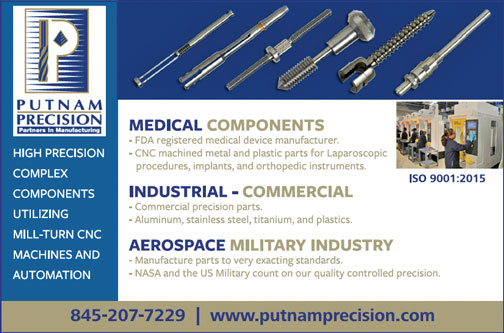A MANUFACTURING CAREER
BRENDA SHAFFER, SELUX | BY JOHNNIEANNE HANSEN
THE NEXT BIG THING
At HV Mfg, we believe careers in manufacturing are rewarding and fulfilling, and we know that each person working in our sector has a unique story. Some people grew up tinkering with things and working with their hands. Some grew up in the family business. Some wanted to invent things. And some – perhaps most – just stumbled into a good job at a good company.
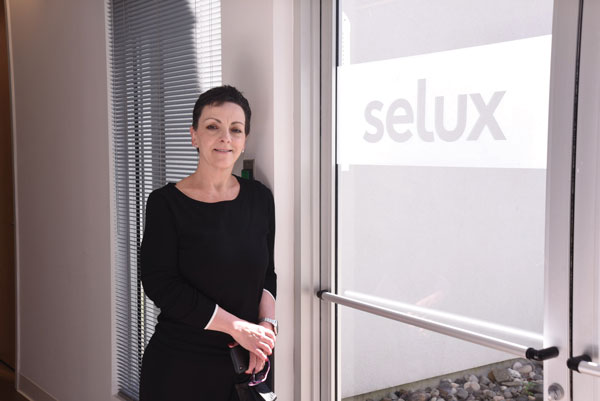
For this edition, Council of Industry Vice President Johnnieanne Hansen caught up with Brenda Shaffer, Vice President of Selux Corporation to hear her story.
Over the next few editions of the HV Mfg, we hope to share some of these stories to highlight the fact that there is not one path to a career in manufacturing and that our sector is a welcome home for people with a wide range of backgrounds and interests.
JH: How did you get started at Selux?
BS: Prior to Selux, I was working as a production control manager at another company, but I didn’t enjoy the people or the work. Without another job lined up, I decided to make a move. I did some nonprofit work for about a year before this opportunity. I started as a receptionist; I was introduced to Selux through a friend who was working here. I took the job because it looked like a good place to get my foot in the door.
JH: You’ve been here for over 30 years – how have things changed?
BS: Yes, this is my 33rd year. When I started there were about 10 people. We only sold products through Staff Lighting, which is now Zumtobel. Staff Lighting would sell and market our products under their name. The phone wasn’t ringing, and I wasn’t comfortable sitting idle. I started getting involved in assisting the part time bookkeeper, purchasing, & engineering BOM’s, from there I started asking questions and going directly into the factory to help with customer or vendor calls. There was no computer system when I started so once we did get one, I was instrumental in the setup. For a period of time, we had no manager; it was just me and one employee overseeing the factory. I was always back there and, over time, opportunities presented themselves.
Selux separated from Staff Lighting in 1995 and started selling and marketing our own products around the country. We added more employees and I started managing quotes and customer service. Between 1995 and 2006, I was running the factory. In 2006 we hired a plant manager, and I took on other responsibilities in the organization. But I have gone back to assist the factory three or four times and am doing that currently. At this point we have about 130 employees. I still have my hands in so many different things and that is a part of my job that I really like.
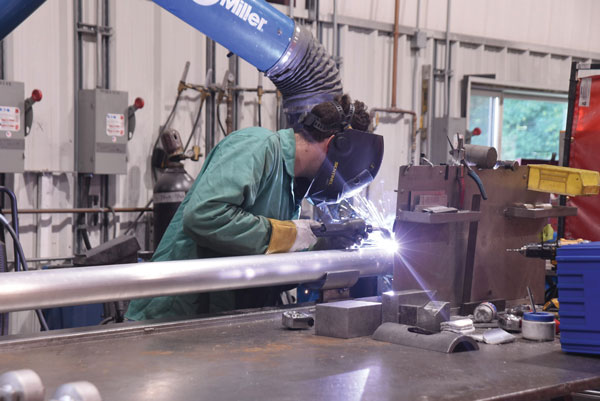
JH: Tell me a little more about that. What are some of the things you currently do?
BS: I do a little bit of everything. I’m Vice President of Operations, which includes customer service, factory, safety, facilities maintenance, purchasing and what we call product definition control, which is the area that creates manufacturing BOM’s. So basically, managing what goes from order release to manufacturing.
JH: What do you find most rewarding?
BS: The Next Big Thing.
I am always looking for the next big thing. Whatever that is, it might be a process challenge, an IT opportunity, something to automate and make things easier or more efficient.
I’m very involved with the software and the processes of the factory. I was the project manager for a new ERP system in 2008. I implemented that project with a coworker who sat in my office and for six months, he and I talked about how it should be done and exactly what it should be doing. I always have my hands in manufacturing, even if I’m not doing the day-to-day scheduling and people management, I am working behind the scenes on continuous improvement.
Over the last two years, because of COVID, it’s been hard to chase the next big thing and that frustrates me. I only feel successful when we accomplish that next big improvement and then move on to another challenge.
JH: To execute the next big thing, you probably need strong relationships with colleagues or department leaders. How have you been able to build relationships that would help accomplish these goals?
BS: Yes, I have a very strong commitment to getting things done and I work with great people. Selux has a solid team that appreciates collaboration, so I focus on having the conversations, getting feedback and ideas from the team. If we’ve done the research and I’m confident in the project, we can implement the solution.
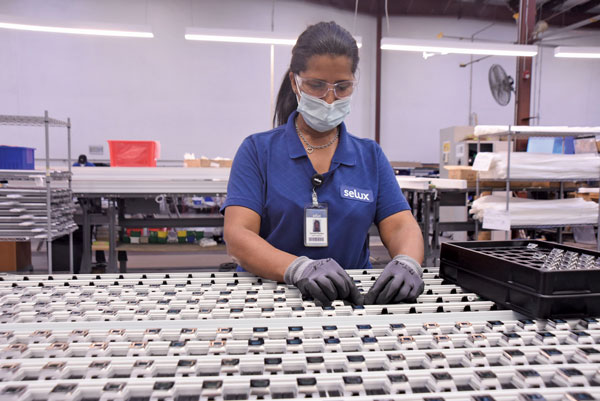
JH: Are you just naturally inquisitive? It sounds like you are always looking for a better way to do things.
BS: Absolutely. I don’t let anything pass through without asking all the whys. We need to ask the questions. Why this? What then? How do you know? I ask questions until I get the information I need to get to the bottom, and then I start thinking about, how to move forward.
For example, while looking at our planning schedule I quickly learned that we were duplicating tasks that were consuming significant amounts of time and I had to find a way around it. I worked with our IT people, and we automated the process, now we have an intranet linked to our ERP, and all the factory employees receive key information much faster.
That’s how it evolves. I see things that need to get done, and I try to figure out ways to fix them and make them simpler. That has always been my approach to problem-solving and has fostered my career progression with Selux.
JH: I’m curious about your background, was there anything in your academic background that positioned you to be successful in this field?
BS: No, it wasn’t anything specific. When I was in high school, all my classes were in the morning, and I was working two jobs. I worked a job from twelve to four and another job from five to nine, every day of the week. One job was at Burger King, where I became a manager before I graduated from high school. I would travel from three different stores and at 18 I was managing multiple stores. It wasn’t my long-term plan, but the work needed to be done and if I was going to work there, I was going to do my best.
That’s what I tell people here, especially employees in the factory. If I have to come to a place and work there for 8 to 10 hours a day, I want to enjoy what I’m doing and do it to the best of my ability. If I’m not, why am I wasting my time? It’s just not in my DNA. Let’s find something that makes you happy!
JH: A couple of years ago, the Council wrote an article about the company. Can you tell me what Selux does in your own words?
BS: We are manufacturers of high-end architectural lighting. What that means today is different than what it meant five years ago. We’ve always been at the forefront of lighting. Selux came up with the linear lines of light, we started them first. Now, it seems like every other day there’s a new lighting company popping up. It is a constant challenge to stay ahead of the competition.
JH: How does Selux do that – stay ahead of the competition?
BS: We have to be innovative. We must approach the market with new ideas, be on the forefront of new technology and design products. Innovation is critical and our people are essential to creating an innovative culture.
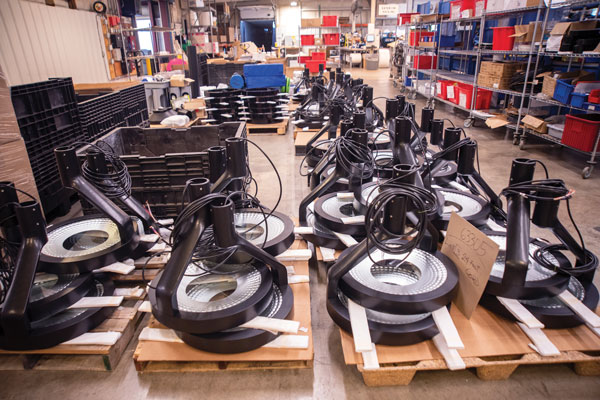
JH: We know that business has changed because of the pandemic. How difficult has the last 20 months been for you?
BS: Fortunately for us, prior to the pandemic we put time into our processes, so our systems and equipment were ready to transition quickly. Within a week, the office staff was able to work from home without hesitation. No glitches and that was a big advantage and a big accomplishment.
Operationally the biggest challenge was the constant change. At first we were told to reduce staff by 25%, and then by 50%, the next day, it was by 75%. I was juggling schedules, trying to keep the factory floor informed and safe. In the end we were designated as an essential business and able to remain open. We ended up with three 8-hour shifts, five days a week to spread factory workers out, while office staff worked remotely.
JH: Would you say your workplace is back to normal?
BS: We are back to normal. Two factory shifts, four 10-hour days. Our office staff is expected to return to the office, but that’s a whole new challenge.
Prior to the pandemic we said, “these are your hours, you are expected to be on time.” But now, it’s different. Office staff is set up to work from home, so if someone has an afternoon obligation they can always clock in for a few hours in the evening.
We know that moving forward, the office environment needs to be more flexible. Employees may need to come in later or leave earlier to manage their outside responsibilities. If that is the case, they can put in extra hours in the evening or work from home part of the week. If we can create a winning culture for Selux and the employee, we will continue to be successful as an organization.
JH: It seems like you have more than a handful of things on your plate. How do you decide what is most urgent?
BS: That’s easy – focus on the customer first. Anything related to the customer is the most urgent. The factory is building products for the customer so that’s going to take precedence.
JH: Last question. What advice do you have for people considering a career in manufacturing?
BS: Find something you love to do and do it well. When you’re working, you want to get noticed for the right reasons, not the wrong reasons. That’s what’s going to help move you forward. Show up and do your best – people are going to see that.
There is a lot of opportunity at Selux. Come and join us!
JH: Thank you for sharing your story Brenda.
BS: Thank you for thinking of me.



